What paint to paint the bath: an acquaintance with the characteristics and classification
Over time, even the most expensive and high-quality bathtubs lose their visual appeal. This is due to the thinning of the outer layer of paint, the appearance of various darkening, yellow spots and other defects on the surface. The occurrence of these problems significantly reduces the visual appeal of the bathroom as a whole.
In order to eliminate this problem, you can either completely replace the bathtub, or perform its restoration or surface painting. In this regard, the question often arises: "What paint to paint the bath?". In order for you to be able to make the right choice with complete confidence, we recommend reading this article.
The photos presented in it will help you visually evaluate the attractiveness, advantages and disadvantages of a particular coloring composition.
Not knowing what paint to paint the bath with, it is necessary to choose the most stable one, since the painted surface will constantly come into contact with water and be in a room with high humidity. Just choosing the color of the paint you like without going into more detailed details and without studying the performance characteristics is a big mistake.
Operational features of the coloring base:
- The composition should not react negatively to an environment with high humidity. Bathtub refurbishment paint must have good adhesion. In other words, it must have good adhesion to the prepared surface. This will prevent the coating from cracking and flaking due to being in an unfavorable environment.
Tip: if you decide to opt for enamel, pay attention to the quality of the composition. This method of supply, like a spray can, is not suitable for painting a cast-iron bath, as it is of poor quality - such a coating will not last long.
- To ensure good adhesion to the surface and ensure its durability, we recommend paying attention to multi-component enamels, the main component of which is polyurethane.
Note! If you do not know what paint you can paint the bath with, we advise you to pay attention to the following products: Dulux, Jobi, Tikkurila.
In order for the paint for the restoration of bathtubs to lie evenly and form the required thickness of the final layer, it is necessary to apply several layers in turn. As a rule, no more than three layers are needed, each of which hardens fairly quickly.
Tip: Since the coloring base hardens very quickly, do not cook it in large portions. In order for the consistency to completely harden, it will take no more than two hours. Therefore, staining must be done quickly, and the composition must be kneaded in one layer.
- Bathtub repair paint must be completely dry before being applied to surfaces. Only then can a second layer be applied. It is equally important to degrease the surface.
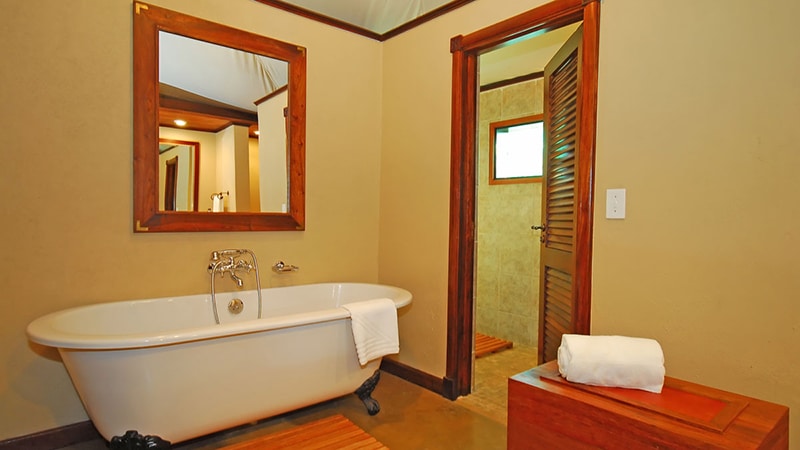
Coloring of the outer surface
Bath paint must be selected separately, according to the type of surface to be painted. In order to paint the outer surface, it is necessary to use alkyd enamel. It contains pentaphthalic.
Tip: In order to paint the outer surface, you can simply prepare, clean and degrease the surface, or pre-prime it with alkyd primer. In the second case, adhesion to the surface and the quality of painting will be higher.
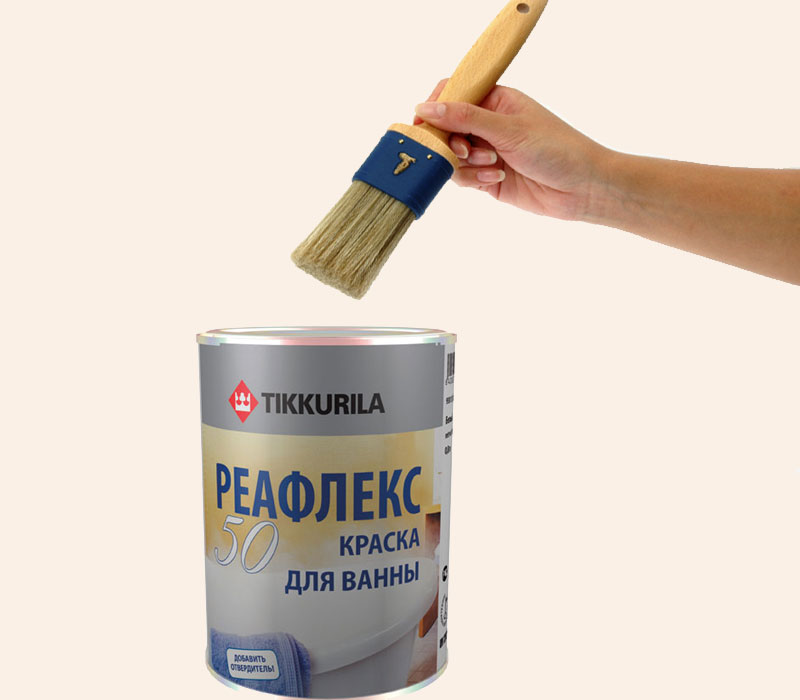
To the question: "How much does bath paint cost?", It is impossible to give a definite answer. The price depends on the manufacturer, quality and composition of a particular product.
Coloring of the inner surface
In order to paint the inner surface of the bath with your own hands, you can use both acrylic and multi-component enamels:
- Multicomponent formulations. They are based on epoxy resins. This makes the coating strong and durable. It is quite difficult to scratch such a surface. The disadvantages include the complexity of application, which is associated with the high toxicity of the coloring composition;
- Acrylic bulk paint applied relatively simply, in comparison with multicomponent (see). It is less toxic, and the final coating has a visual similarity to that obtained as a result of the first option.
You can learn more about the advantages and disadvantages of each paint by watching the following video.
Tip: If you are not experienced in painting, we advise you to choose more easy-to-use acrylic pourable compounds, which, due to their optimal consistency, allow you to apply layers of one thickness, and at the end create an even and smooth coating.
We clean the bath of paint and carry out restoration
If you do not know how to clean the paint from the bathtub and restore it, we suggest that you familiarize yourself with a small step-by-step guide:
- The first step is to degrease the entire surface. In order to get rid of fat and limescale, it is necessary to use special potent solutions, which contain alkali.
- Removing the old cover. To do this, we use a special grinding tool. This option allows you to profitably save your free time. However, if you do not have the necessary equipment, you can replace it with plain sandpaper. This option will take not only more effort, but also time.
Important: Since grinding equipment is quite expensive, and not everyone wants to buy it for fairly rare use, we advise you to rent such a tool from a specialized company.
- We clean the bath from the remaining enamel. Residues of paint can be washed off with running water. If you see how water collects on the surface of the bath, then the degreasing is done well. Otherwise, the degreasing process must be carried out again;
- Perform drying. In order to facilitate the process of further work as much as possible and at the output to obtain the most even coating without signs of being inside the old enamel, it is necessary to dry. Dry the entire interior surface and walls with a special hair dryer.
- Coloring. When performing staining, it is necessary to adhere to simple rules and a certain technology. To do this, stain, starting from the sides and moving towards the bottom. The instruction also implies phased coloring in 2-3 layers. The bottom is painted last.
Important: Finally, let the paint dry completely. To do this, leave the coating to dry for a day. At the same time, all doors and windows in the room must be tightly closed so as not to create drafts. Such isolation will not allow dust and dirt to settle on the surface of the product. Try not to bathe in the bath for 5-7 days - this will allow the paint to completely harden and adhere well to the surface.
Odorless bathroom paint, most often has an acrylic base. It is very convenient to use such a composition, since it is possible to perform staining and restoration not only at the stage of a global renovation of the entire apartment, but also at the moment when the family already lives in the apartment.
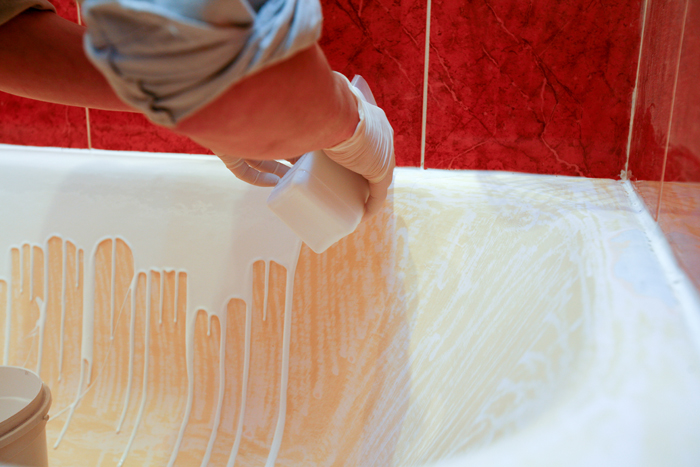
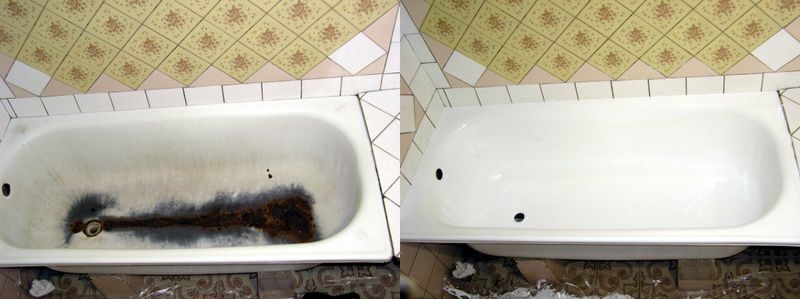
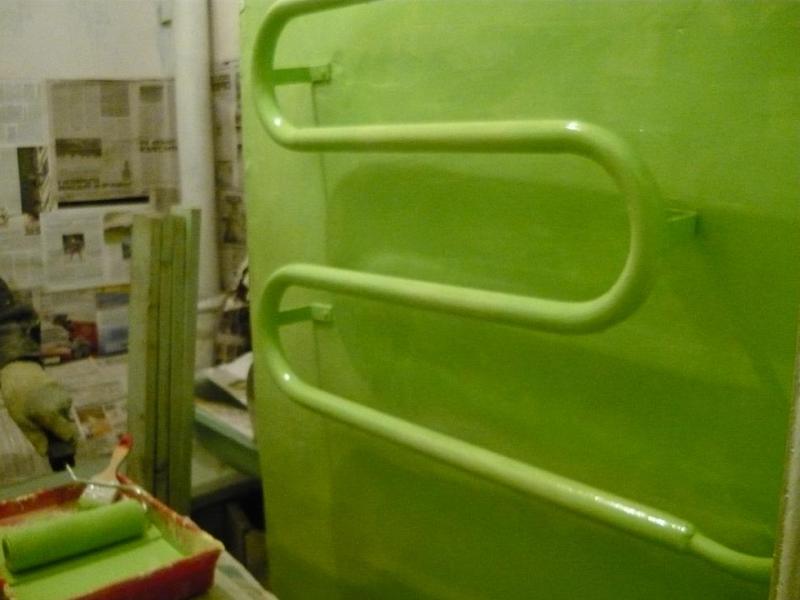
Paint for pipes in the bathroom allows you to hide all defects and unaesthetic nuances, such as rust, darkening, stains.
The choice of composition depends primarily on the material of manufacture of the pipe structure:
- metal. The surface must be prepared by cleaning off all the old coating. To create a protective layer, and then give the surface good adhesion, the surface is primed. It is important that there is no condensation on cold pipes during the painting stage. Suitable primers and paints based on organic solvents. are also suitable, however, they are characterized by the release of an unpleasant odor - both during operation and when dried. The water-dispersion base does not have a strong odor, is distinguished by its durability and dries quickly. Acrylic enamels for painting pipes are used no less often. They are durable and have an aesthetic appearance;
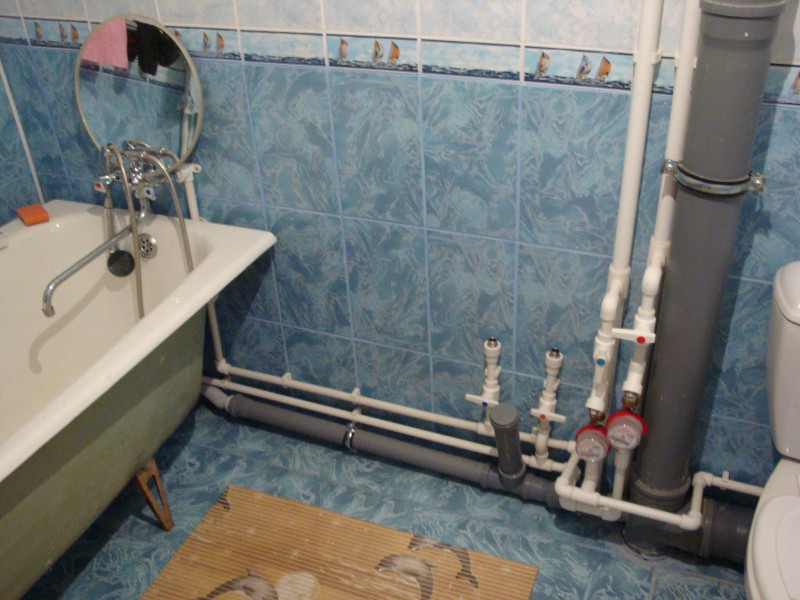
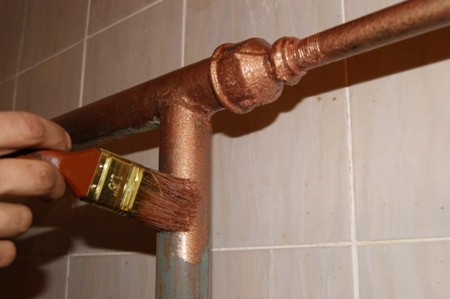
Tip: If the pipe is hot, give preference to special heat-resistant compounds. But it is better that the pipe is not hot at the time of painting, as the paint on such a surface dries very quickly. This will not allow, if necessary and lack of experience, to correct all the shortcomings.
- Galvanized. For such pipes, painting is not provided. The exceptions are areas with broken coating, as well as welds and threaded places, i.e. where additional protection is needed;

- Polymer. Such pipes do not require mandatory painting. The use of paint may be due to the personal wishes of the owners, due to the inappropriate color of the pipes. It is not recommended to use a primer, since the coloring base fits so well on a perfectly smooth and even surface. It is forbidden to use substances that contain acetone, which destroys the plastic surface. Give preference to dispersed: acrylic, silicone, latex, as well as silicone paints.
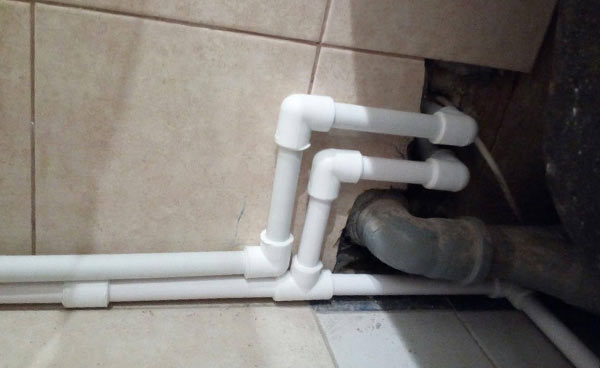
Tip: If you want to save your time and effort, and paint in just a few steps, we suggest paying attention to special coatings that combine not only paint, but also a primer.
Now you know exactly what paint to paint the tub and pipes with. This will allow you to make this process as simple and clear as possible at every stage. If you follow all the instructions exactly, the coating will look beautiful and last for many years.









